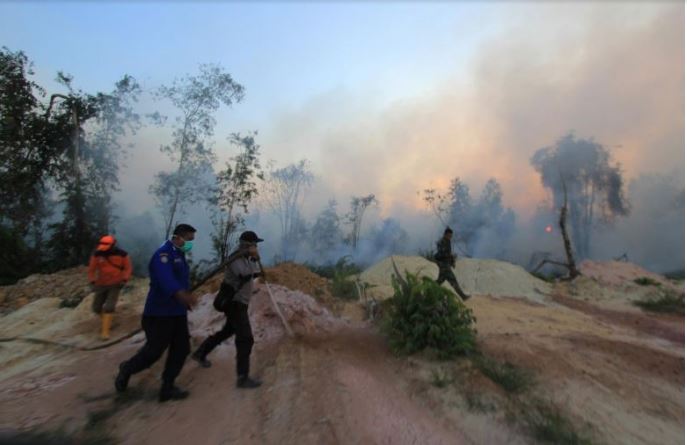20200527 Indonesia carries out cloud-seeding operations early in the dry season to prevent forest fires

Indonesia Nov 13 2020 “Forest”
Dead : dead 0 or unknown Burnout : 0 or unknown Injured : injured 0 or unknown
Indonesia carries out cloud-seeding operations early in the dry season to prevent forest fires
Updated: 2020–05–27

A bad spell of forest fires, such as what occurred last year, spread haze throughout the region, including in Singapore.PHOTO: ANTARA/ASWADDY HAMID
JAKARTA – Indonesia is carrying out cloud-seeding operations to induce rain in regions prone to forest fires and this will continue until the dry season ends in September.
A bad spell of forest fires, such as what occured last year, spread haze throughout the region, including in Singapore.
The dry season started in April and will peak in August and September in different parts of the sprawling archipelago.
Cloud-seeding operations have been carried out to wet peatlands in a few areas in Riau province since mid-May, including in Rokan Hulu, Rokan Hilir, Dumai, Bengkalis, and Pelalawan, said Mr Tri Handoko Seto, head of weather modification technology division of the Agency for the Assessment and Application of Technology (BPPT).
“Since early May, the level of the water table in the peatland has dropped. Therefore, we have to wet it again,” he told The Straits Times.
“By wetting the fire-prone peatlands, we have reduced the chance of potential fires in the areas. Right now, there are no hot spots in Riau,” he added.
Riau, which is close to Singapore, is among six provinces in Sumatra and Kalimantan – in the Indonesian part of Borneo – usually the hardest hit by forest fires. The other five are Jambi, South Sumatra, West Kalimantan, Central Kalimantan and South Kalimantan. All six were ablaze due to the prolonged dry season last year.
Peatlands are easily combustible and fires on them are harder to extinguish as they can keep burning underground for weeks, especially in deep areas, producing thick haze.
The BPPT plans to continue its cloud-seeding operations in June in South Sumatra and later in some provinces in Kalimantan until the end of the dry season, Mr Tri said.
The Meteorology, Climatology and Geophysics Agency (BMKG) in late March forecast a “wetter” dry season for most of the country this year compared to last year.
Around 30 per cent, however, are likely to experience a “drier from usual” season. These include the northern parts of Sumatra as well as parts of Java, Bali, Nusa Tenggara and East Kalimantan. The southern parts of Sulawesi as well as the west and south of Maluku are also likely to be dry.
BMKG’s head of climate variability analysis Indra Gustari said that while the dry season began in April in a number of regions, such as in Jakarta and Banten in Java, and Bali, it would only start at the end of May or early to mid-June in various areas in Riau.
“The dry season will peak in June in most parts of Riau, except its central regions where it will peak in July,” he said, noting the short period between the beginning and the peak of the dry season in the province.
Mr Indra also said the next monsoon season was expected to begin in October to December in different parts of the country.
The agency will release its monsoon season forecast in August.
President Joko Widodo in early May warned the Cabinet about “a dry season that is drier than usual” which would affect agriculture and ordered that necessary measures be taken to mitigate its impact such as by ensuring water availability in key farming areas.
If left unaddressed, a drought could threaten Indonesia’s food security as it battles the Covid-19 pandemic which has already killed 1,473 people and infected 23,851 in the country.
The United Nations Food and Agricultural Organisation has already warned about a potential global food crisis amid the ongoing pandemic.
Web Source: The Straits Times
